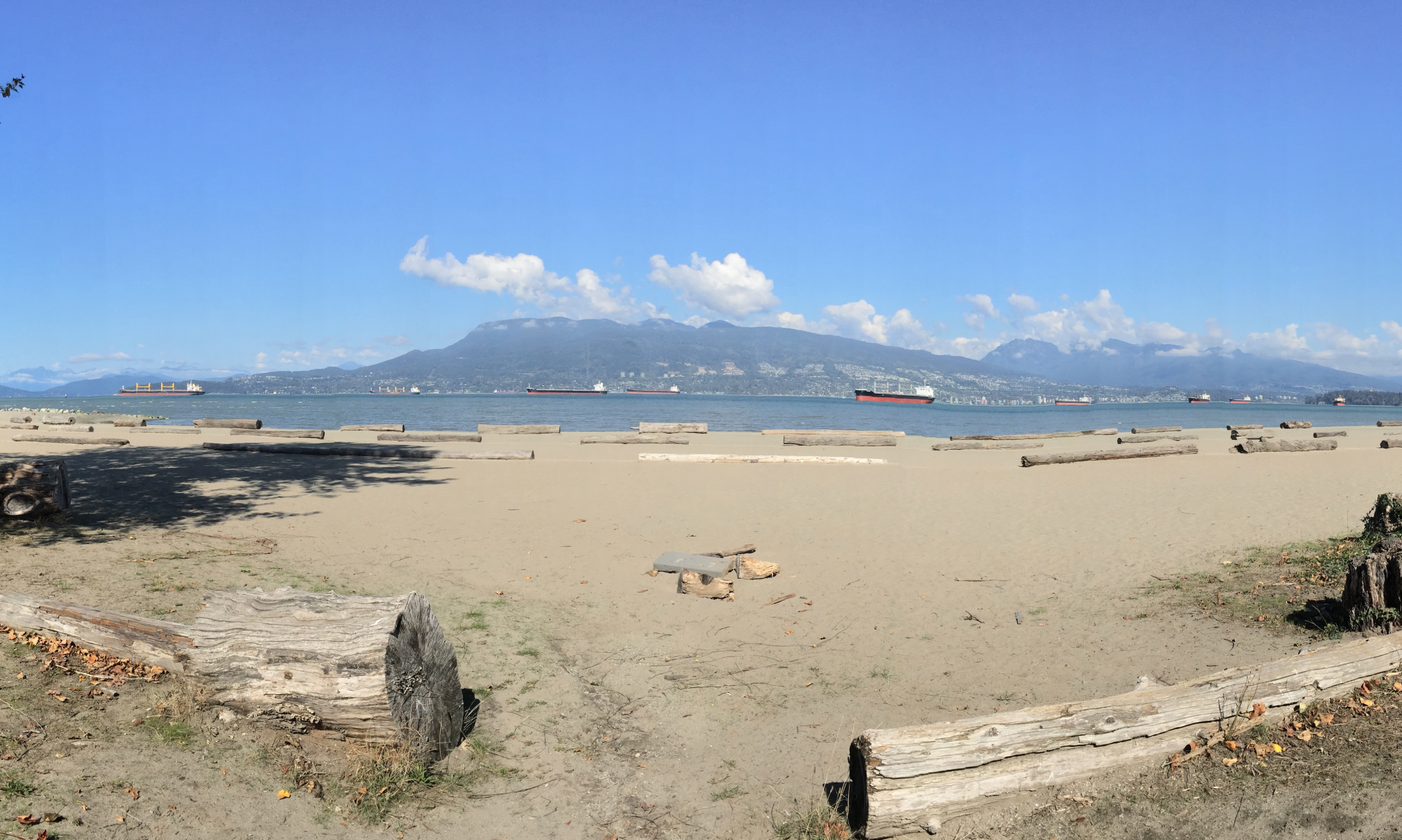Adventures in The Internet of Things by a Tamagotchi House Parent
Imagine being woken from a sound sleep to a water leak, that has submerged the lowest level of your residence in ankle-deep water. Imagine that it’s Christmas Eve, at the very end of a cold snap that saw record unseasonably low temperatures for more than a week.
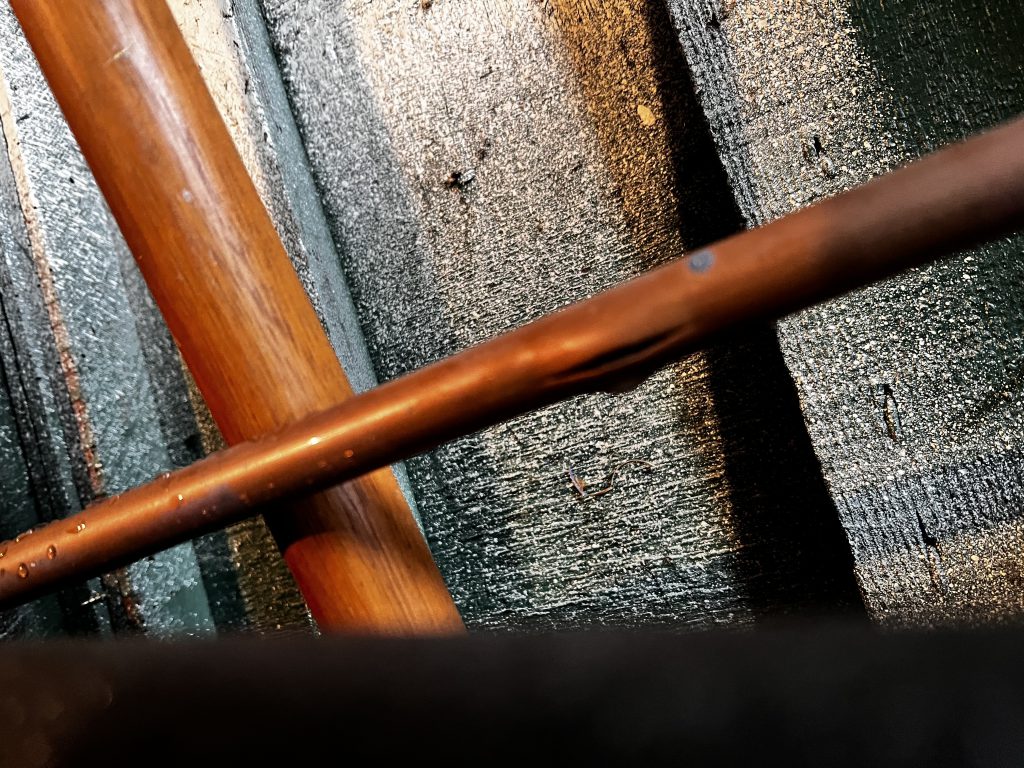
Where is this water coming from? A quick look around didn’t reveal a geyser, nor were there audible signs that a great bladder release event had been or was currently happening. More investigation revealed a scene straight out of a submarine disaster movie. In the undercroft, an uninsulated storage area under the porch of this century-old craftsman-style house in East Vancouver, the sound of high pressure water shooting horizontally in the dark cubical cave. “Don’t turn the light on in case you get electrocuted!” I hear from my housemate, which really doesn’t encourage me to investigate further.
Ever watch a documentary about spelunking, that very weird extreme cave-exploring activity that only people who don’t suffer from claustrophobia ever try? Not only do they willingly put themselves into dark, wet holes in the ground that often cannot be navigated without removing all of your bones, but they often have waterfalls and pools of water in them. I was trying not to think of that, as I turned on the light on my iPhone, so that sound now had shape, too. A ribbon of water shooting straight east, and somewhere past it, the valve to shut the whole thing off.
The background noise of trauma-chatter fades as I steel myself to cut through the liquid ribbon, glittering in the reflected smartphone light, and reach the prize of the shut-off valve. Unbidden images of various submarine disaster stories montage their way through my brain, as the chilly water soaks through my pants and fills my winter boots. Several uncountable clockwise turns on the valve handle, the the spray stops so the damage can be surveyed. There is about four or five inches of water covering the rough concrete pad, with various things my housemate, who owns the house, stored with the nonchalance of someone who never thinks about potential disasters. Meanwhile, the house is without water until someone qualified can come out and cap off the spur. Not my circus, not my monkeys. But it is Christmas Eve.
My involvement in this opera ends for an act or two, as the house owner deals with finding a plumber on short notice, researching what has to happen next, which I figure is not my concern. Boy, was I wrong. There are these devices that can be installed to a water main, above the manual shut-off valve, that can do that (shut off the water to the entire house) automatically if the device detects a leak.
The particular device that ended up being installed is called a Phyn Plus 2nd Generation, and connects to the building wifi via a complex authentication process that ties the user account’s cellphone to the device. There is only one user account associated with each device, and the device interface can only be accessed via the mobile app. There is no browser-based access, ability to share the admin work with another person. Doesn’t seem like a huge problem, right?
Oh, you sweet summer child. How would you like to be responsible for every single water event that happens, from a dripping tap or a flushed toilet whose flapper valve doesn’t seat properly, to a bath left to overflow, or a garden hose that wasn’t shut off. And of course, every. Single. False. Positive. The system is not all happening locally. It’s connected to Phyn’s “Cloud AI service” to analyze water use and patterns, which is the source of many of the alerts. Which happen 24 hours a day. But are they real? Let’s take today as a case study.
According to the Phyn App, everything involving water gets tracked by the device, which apparently uses some AI/ML jiggery-pokery to determine the sonar signature of every water-using device connected to the Phyn Plus.
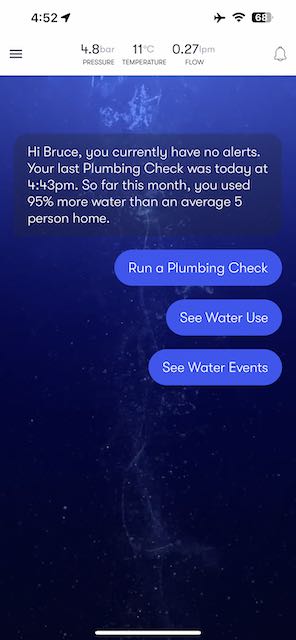
The opening screen before
clicking on “See Water Use”
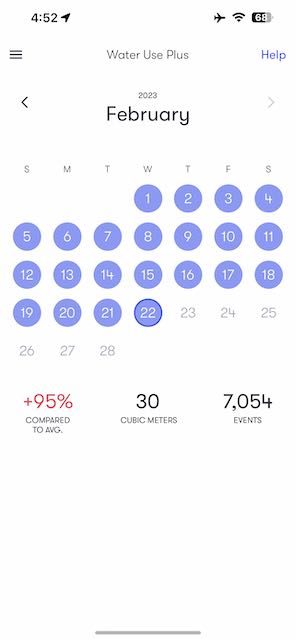
Pick a day to see what “Water Events” happened
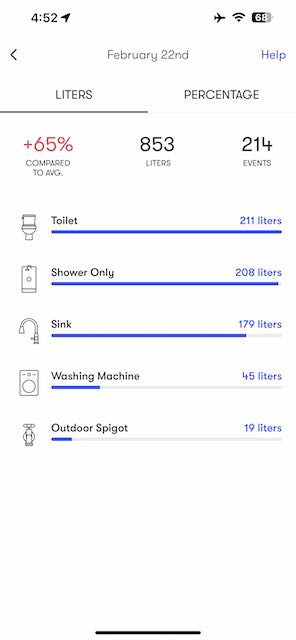
Apparently we flush more
than we shower. Nice.
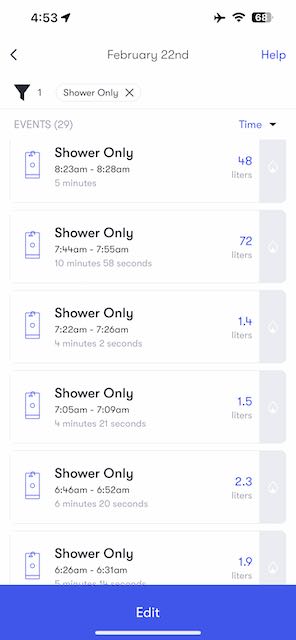
Even when water rationing,
I doubt that 1.4 litres
would be effective to shower.
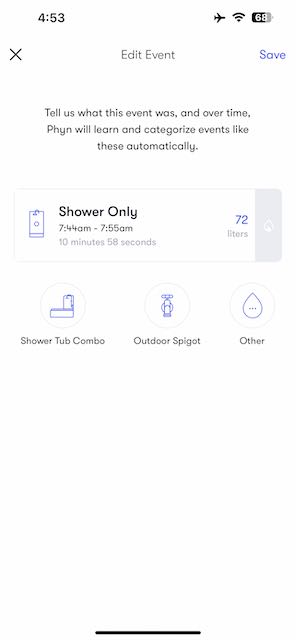
How much water does a shower take?
